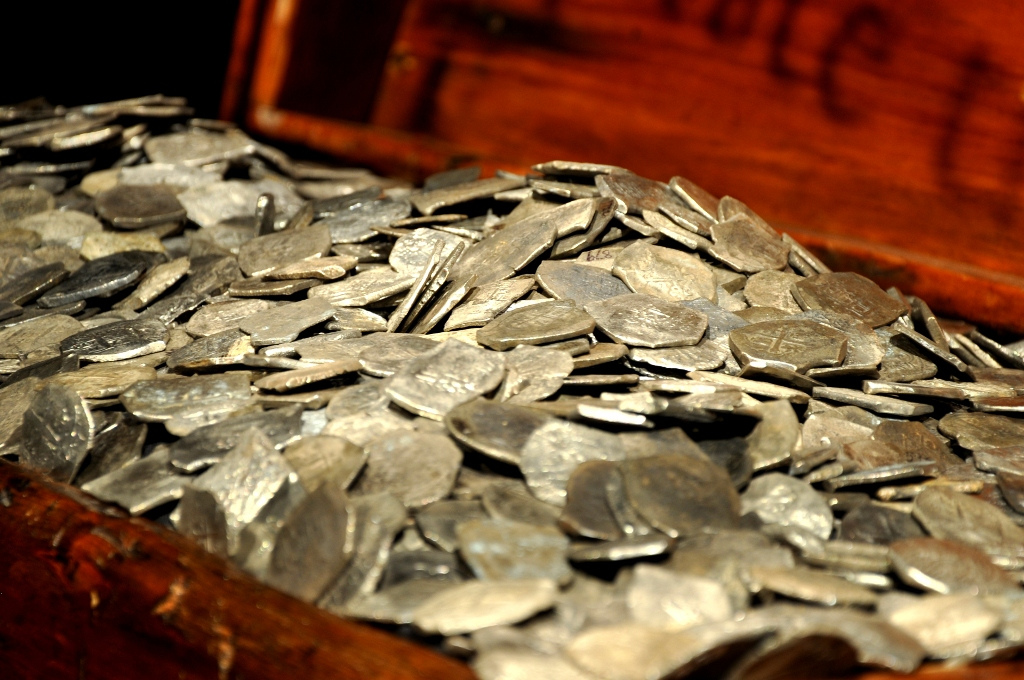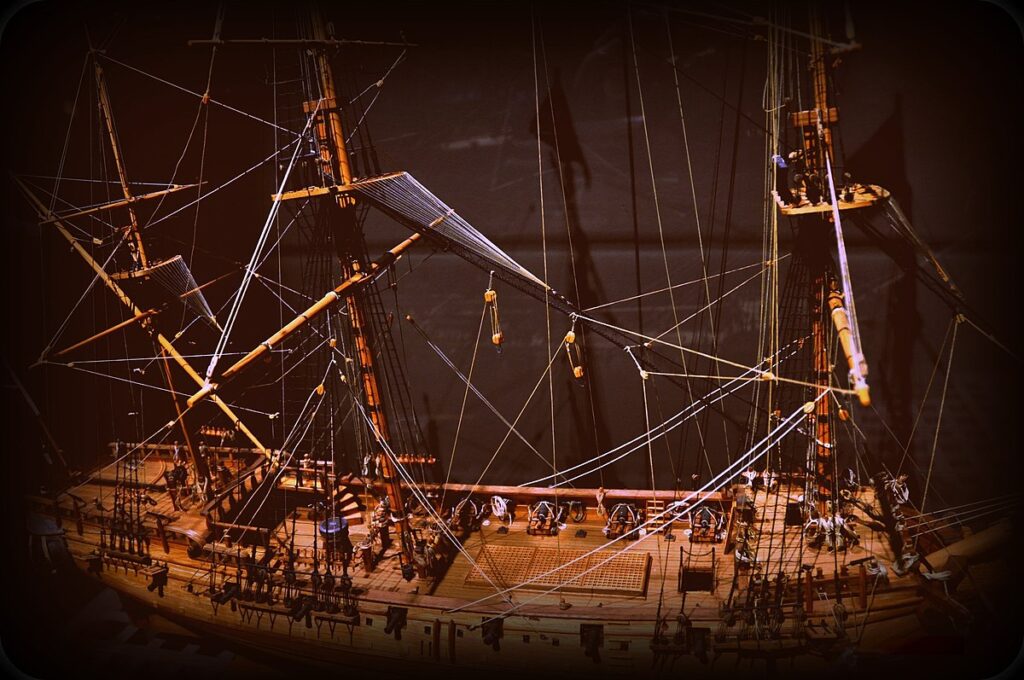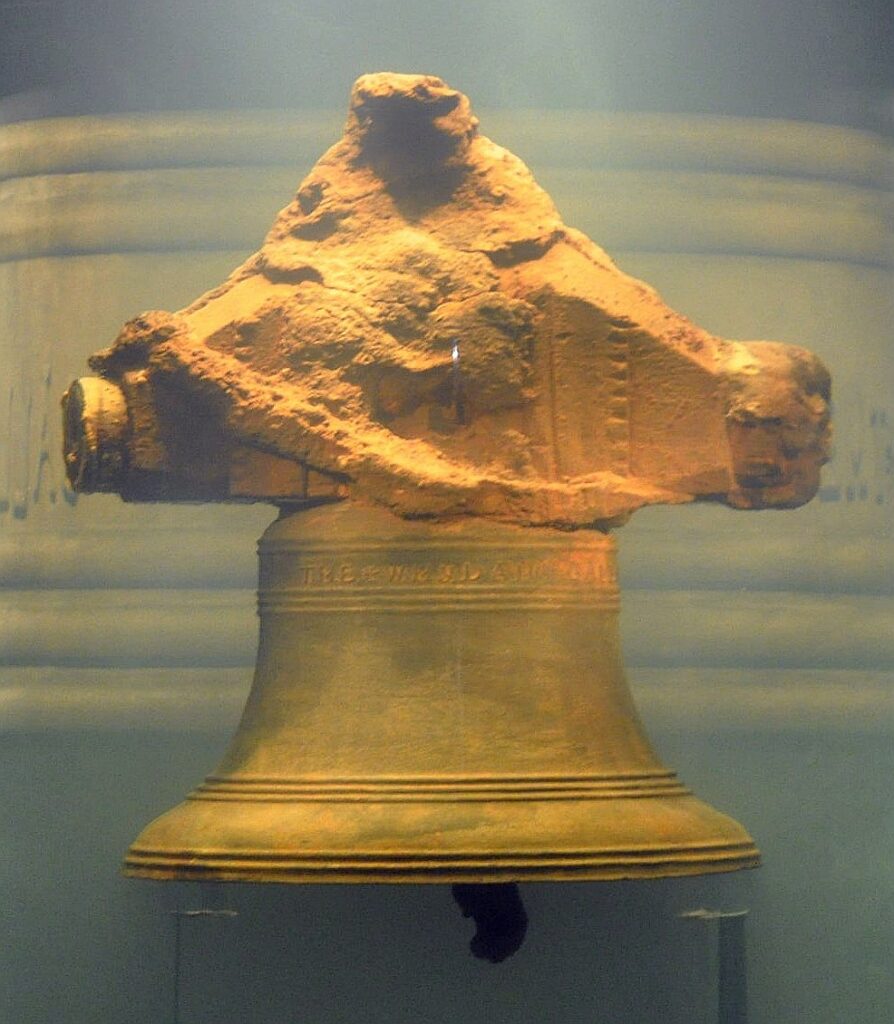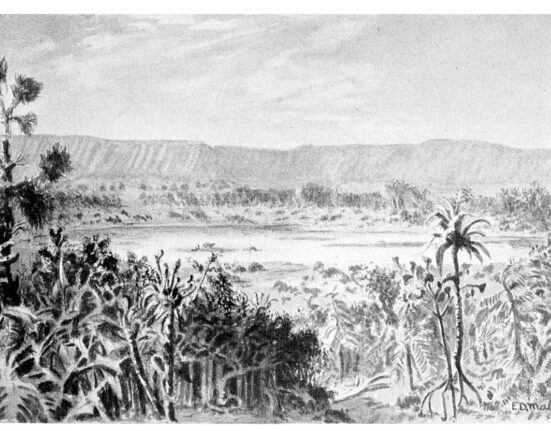The “Prince of Pirates,” the “Robin Hood of the Sea,” “Black Bellamy;” Samuel Bellamy’s short career as a pirate captain was dramatic enough to earn him such epithets as these. Forbes Magazine, of all places, has named “Black Sam” as history’s wealthiest pirate. This is shocking considering the fact that Bellamy’s entire career as a pirate lasted barely more than one year. (1) So, who was Samuel Bellamy, and how did his short-lived career in piracy become so influential?
A Wayward Sailor
Samuel Bellamy was born to a poor family in 1689 in a small village called Hittisleigh, near Dartmoor in the west of England. Much of young Samuel’s personal life has been lost to history, however we do know that his mother died while he was very young and that by his early teens Samuel had set out for one of England’s port cities, intent on becoming a sailor. Initially gathering experience as a sailor, by 1715, Bellamy was a seasoned man of the British Royal Navy. (2)
Around this time, Bellamy made his way to the New World. Life in the Royal Navy was difficult and often thankless. It is believed that he came to the Cape Cod area seeking a way to make his fortune. It is in New England that Bellamy is thought to have had an affair with a woman whose surname is Hallett. Hallett’s first name, which is often recorded as “Maria,” is disputed as is the extent of their affair. Some speculate that the two produced a child. Some legends indicate that whilst Bellamy was away, Hallett was exiled from her home town on account of their child’s negligent accidental death. Unfortunately, the veracity of these legends, the fate of Hallett, and the existence of their love child is all confined to the realm of speculation.
More Mysterious History: The Princes in the Tower: A Medieval Murder Mystery
A Pirate’s Life
In any case, Sam Bellamy left Hallett and Cape Cod in 1716 to seek the treasures of a shipwrecked Spanish vessel which sank the year before. Alongside a friend named Palgraves Williams, Bellamy sailed from New England to Florida in search of the treasure. The treasure hunt would ultimately fail, but this misadventure would bring about the start of Bellamy’s pirate career.
Not long after the beginning of their expedition, Bellamy and Palgraves would join the pirate crew of Captain Benjamin Hornigold. Hornigold, along with his infamous first mate, Edward “Blackbeard” Teach, attacked ships throughout the Atlantic coasts of North America and the Caribbean Islands. Hornigold is famous for his association with Blackbeard and for founding the “Republic of Pirates” based on New Providence Island in the Bahamas. (3)
Hornigold faced a mutiny in 1716 and was voted off of his own flagship, the Marianne. Apparently, Hornigold was cautious never to attack British ships, a habit which had begun to irk his pirate crew. Hornigold, Edward Teach, and the members of the crew which remained loyal to him abandoned the Marianne to the mutineers. The newly-minted but quite popular young pirate, Samuel Bellamy, was elected as the new captain of the Marianne and her remaining pirate crew. (4)
The Prince of Pirates
What would follow Bellamy’s appointment as captain was a stunning career in which, over a period of mere months, the crew of the Marianne, captained by Palgraves, and the Sultana, Bellamy’s newly captured flagship, would successfully capture more than fifty new vessels. (5)

During this period, Bellamy gained his reputation as a “gentleman pirate.” Bellamy is thought to have inspired the fashions now associated with pirates; he rejected the pomp of powdered wigs and instead wore his long black hair tied back with a cord. This earned him his nickname “Black Sam.” Furthermore, Sam captained his fleet using fairly democratic methods which led to his immense popularity amongst his crew. The crew took to calling him the “Robinhood of the Seas,” and themselves “Robinhood’s Men.” Sailing under Black Sam Bellamy’s flag was a matter of honor and pride. Consistent with this persona was Bellamy’s supposed disdain for wealthy and belief that pirates were no more villainous than noblemen who subsisted off of exploiting the poor. (6)
They vilify us, the scoundrels do, when there is only this difference, they rob the poor under the cover of law, forsooth, and we plunder the rich under the protection of our own courage. Had you not better make then one of us, than sneak after these villains for employment? (7)
Samuel “Black Sam” Bellamy
Before long, Bellamy had accomplished a reputation as a prolific pirate, a brilliant tactician, and a beloved leader. Much to the surprise of those whom he plundered, Sam Bellamy was shockingly gentle and fair; he made efforts wherever possible to do no more harm than necessary, and would never harm a foe who had surrendered.
More History to Check Out: An American Mummy: The John Wilkes Booth Conspiracy
The Whydah Gally
In 1717, Bellamy would win the crown jewel of his pirate career, a victory which would be terribly short-lived. The Whydah Gally was a state of the art slave ship, loaded with the treasures that resulted from a successful run through the second leg of the Atlantic Slave Trade. Gold, jewels, and other precious things bought with the lives of African slaves filled the coffers of this relatively new and impressive ship. It’s no wonder that Black Sam and his crew were determined to take it. After spotting the Whydah, Sam and the crew of the Sultana chased the slave ship for three days before finally entering firing range and shooting at the vessel. It only took one shot for the captain of the Whydah to surrender. (8)
True to his gentlemanly reputation, Bellamy was more than merciful towards the captain who had given up without forcing him into a perilous battle. After transferring his own treasures from the Sultana to the Whydah, Sam Bellamy gave his own flagship to the Whydah‘s captain. The Whydah became his new flagship immediately, and it is sometimes said that this acquisition was so significant that Sam set out towards Cape Cod immediately, with the goal of finding Maria Hallett and retiring from his life of crime on the high seas. (9)

This retirement would never come to be. Two months after acquiring the Whydah Gally, Samuel Bellamy and his crew were caught in a vicious storm and shipwrecked. The Whydah sank to the depths bringing almost every member of her crew with her. Samuel “Black Sam” Bellamy perished in this wreck at the age of twenty-eight.
New England Treasure
In 1984 the wreck of the Whydah Gally was found off the coast of Wellfleet in Cape Cod by a team of undersea explorers. The shipwreck is considered the only confirmed pirate ship ever recovered and the treasures within have done much to increase our historical understanding of the so-called “Golden Age of Piracy.” Within the wreck, several bodies, presumed to be members of the pirate crew, have been found. Much speculation has occurred over the possibility that Bellamy’s body may be identified among the remains found. Regardless of the location of his remains, which may have been obscured by his time beneath the sea, it is quite certain that the Whydah Gally is the final resting place of Samuel Bellamy. (10)

There are some, however, who believe that Bellamy left behind a much greater mystery and much more precious treasures than those found within the wreck of the Whydah Gally. It is said that somewhere near the mouth of the Machias River, near the small town of Machiasport, Maine, Samuel Bellamy built a fort, underneath which he buried untold treasures which would be worth millions today. The fort has long disappeared, however the vault is thought by some to still lie concealed. (11) Further myths suggest that this treasure is cursed, or that it was hidden so well because Bellamy executed the men he tasked with building it once it was completed. These are likely just myths. But the question still remains: is the treasure vault of the richest pirate whoever lived still waiting for an adventurer to uncover it? Such a legend, no doubt, awakens the pirate in all of us.
More Weird History: Was the Last Pharaoh of Egypt the Son of Julius Caesar and Cleopatra VII?






